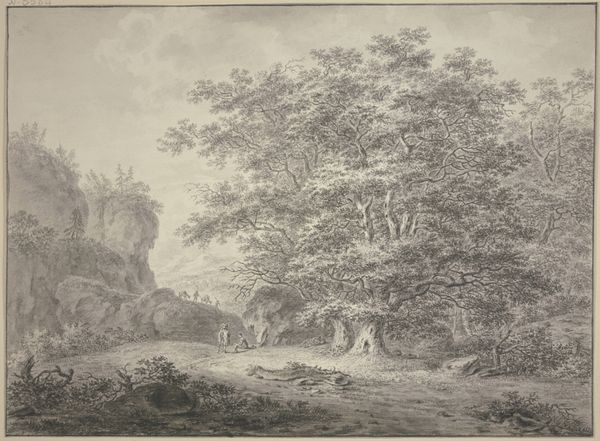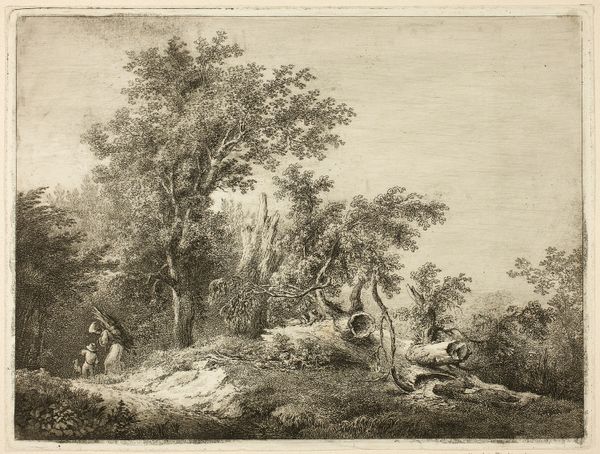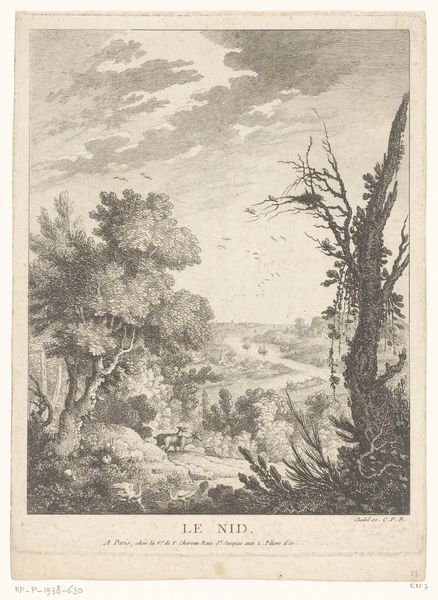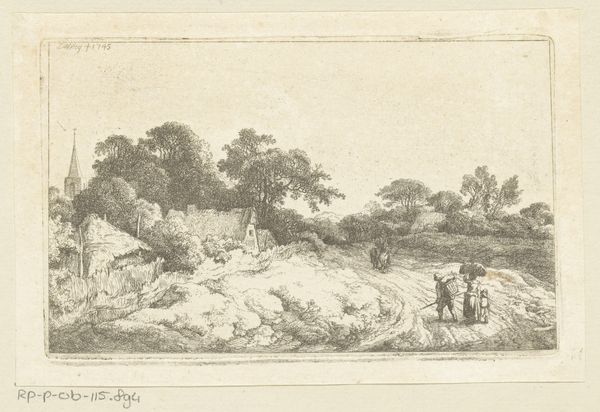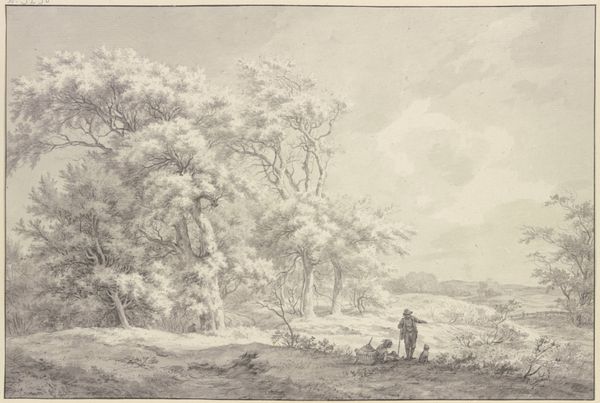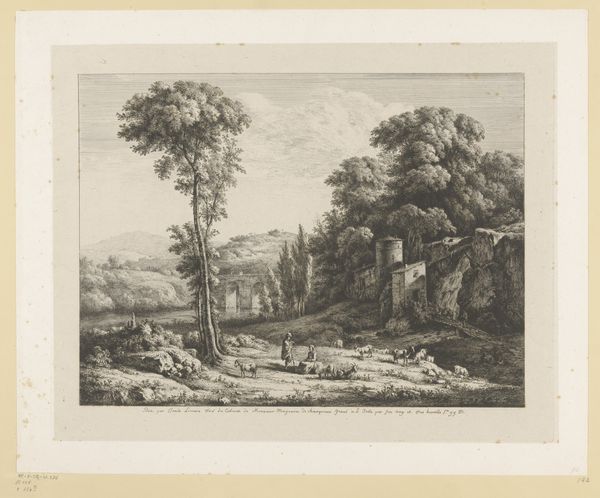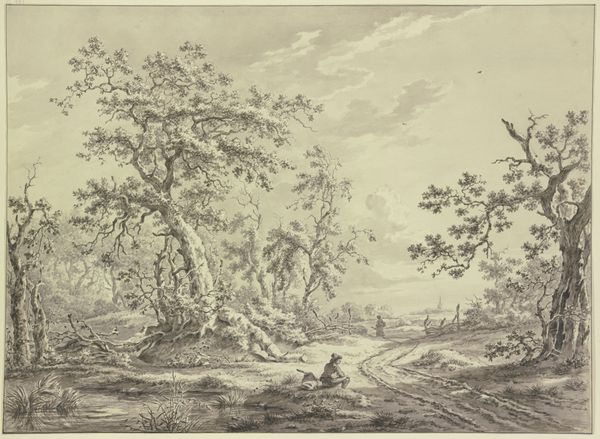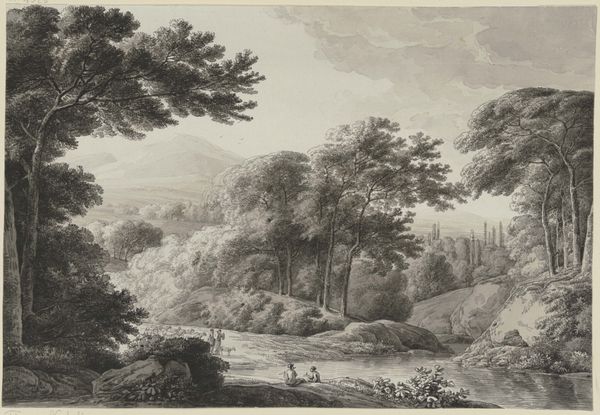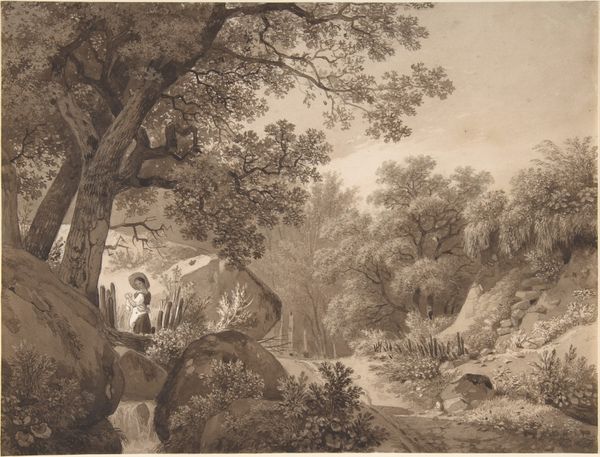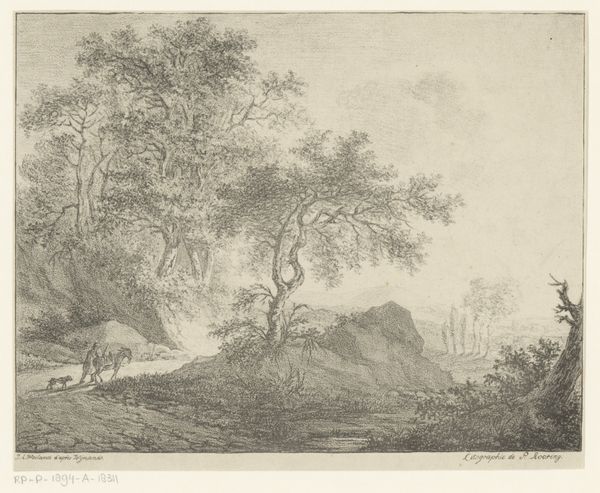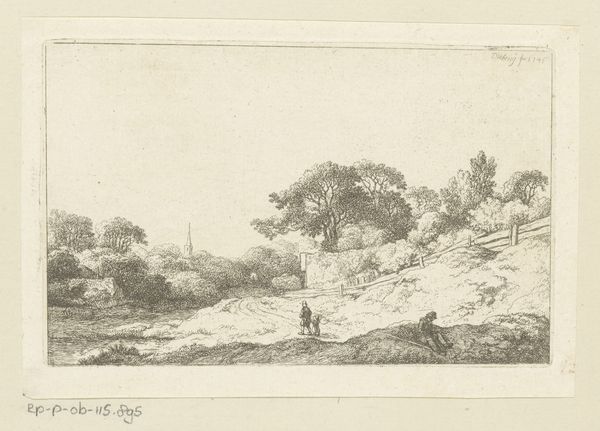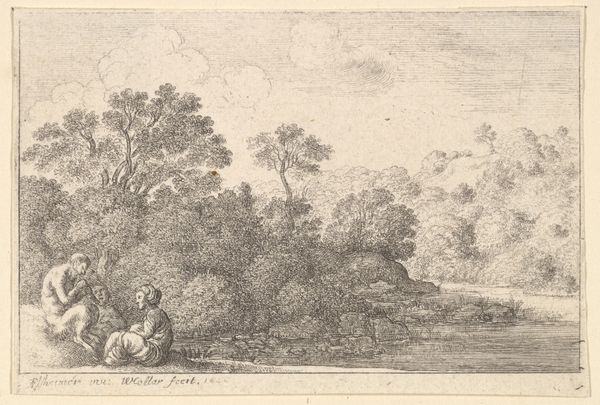
drawing, paper, pencil, graphite, architecture
#
drawing
#
pencil sketch
#
landscape
#
paper
#
romanticism
#
pencil
#
15_18th-century
#
graphite
#
architecture
Copyright: Public Domain
Editor: Here we have "Ruwine van het Slot de Egmont," a drawing made with graphite and pencil on paper by Egbert van Drielst. The light and shadows feel quite melancholic, with the ruined castle in the background. How do you interpret this scene? Curator: This work embodies a 18th-century Romantic fascination with ruins, reflecting a shift in societal values. Ruins become picturesque and serve as poignant reminders of lost grandeur. Considering the Egmont Castle itself, does the imagery evoke a sense of the socio-political turmoil of that era? Editor: It definitely seems to, especially considering how the drawing captures not just a ruin, but nature reclaiming it. Curator: Precisely! Think about how the architecture acts as a stage for reflecting upon human ambition versus nature's enduring power. Also, notice how the figure and sheep in the foreground suggest a world continuing despite the decay. What feelings does that juxtaposition trigger? Editor: A feeling of transience, I guess. Everything changes, even stone eventually crumbles. It also brings into focus this idea of how art can make something relevant that perhaps at a certain time of making wasn't. How people can look at these castles now with fresh eyes and see its decay as a beauty. Curator: An excellent point. The artist reframes something typically viewed negatively, transforming it into an object of aesthetic contemplation, prompting discussion and engaging with a newer public who were experiencing societal shifts at the time. Thank you! Editor: Thank you! I didn't know this kind of decay can speak a lot of societal issues that it's audience would easily point to at the time.
Comments
No comments
Be the first to comment and join the conversation on the ultimate creative platform.
